2024GWは岐阜・名古屋へ小旅行/A little trip to Gifu and Nagoya in GW2024
Golden Week: A 3-Day, 2-Night Trip to Gifu and Nagoya
For this year’s Golden Week in 2024, I decided to take a vacation on the weekdays of Wednesday, May 1st, and Thursday, May 2nd, making it a 3-day, 2-night trip from Gifu to Nagoya until Friday, May 3rd. Nagoya is actually my birthplace, and even though I moved frequently during my childhood, it is a place where I spent a considerable amount of time. Taking advantage of this opportunity to revisit after several years, I planned to also visit some famous spots in Gifu Prefecture that I usually wouldn’t go to.
(English text continues to the latter half of the page)
ゴールデンウィークは2泊3日で岐阜と名古屋へ
今年2024年のGW(ゴールデン・ウィーク)は、平日の5/1(水)と5/2(木)で休暇をとり、5/3(金)までの2泊3日の旅程で岐阜から名古屋を巡ることにした。名古屋は実は生まれ故郷で、引っ越しばかりの子供時代の中でも長い時間を過ごしたところ。数年ぶりに訪れてみるついでに、普段行くことのない岐阜県の名所を周ってみることに。
まずは名古屋まで新幹線で向かい、そこから東海道本線で岐阜駅まで20分ほど。ここでレンタカーを借りて、翌日まで岐阜県を巡り、翌日に名古屋に1泊してから東京に戻ることに。できるだけGWの混雑を避けるために平日をメインのスケジュールにした。
初日は激しい雨と風、たまらず“穴”に籠ることに
岐阜駅に午前中に到着してレンタカーを借り、最初に向かったのは日本百名瀑に数えられる「養老の滝」。岐阜県の中でも関ヶ原に近い県西部に位置する景勝の地で、小学生の時分に遠足で行ったところだ。ただ残念なことにこの日は朝から雨が止まず、滝までの遊歩道を歩くことは早々に諦め、同じ地域にある「養老天命反転地」という90年代に設置された現代アートのインスタレーションに向かうことにした。恐らくここならば屋内主体だろうから雨が凌げると考えたのだが、これがとんでもない間違いだった!
施設全体が18,000㎡という広大な丘陵地帯に広がる屋外展示が主体。雨に加えて山から吹き下ろす暴風まで加わり、とても外を歩ける状況ではなくなり、2人で1,500円の入場料を払って5分後には逃げ出すように撤退!本来なら丘陵地帯に広がる多くの屋外型アートは、水平や垂直の軸を意図的に排除し、観察者のバランス感覚を狂わせる特徴的なアートインスタレーションだったはずなのに、さすがに事前の情報収集に難があった。




これで養老の滝を散策することも諦め、次に向かったのはこの日の宿泊地の郡上八幡市。この近くにある鍾乳洞なら雨でも関係ないだろうと、大滝鍾乳洞へ向かう。郡上八幡には複数の鍾乳洞があるが、大滝鍾乳洞はその中でも規模が大きく、洞内に滝があることで有名なところ。“穴”が大好きで世界中の鍾乳洞や洞穴を巡っている自分も、この規模の滝は見たことがない。
入洞券を購入した後は、ケーブルカーで入り口まで。
鍾乳洞としては中規模くらいだが、一部に人の手が入って無理に支洞をつなげたようなところもある。ただそれでも洞内の滝は30m規模で、これは初めて見るクラスだった。
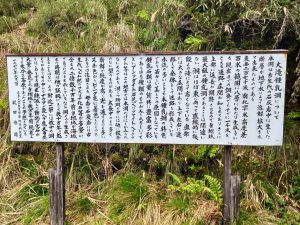


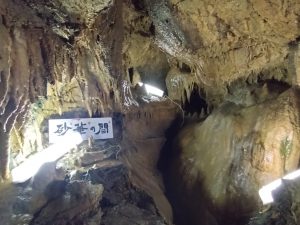
夕方までには鍾乳洞見学を終え、車で10分ほどの郡上八幡市内へ。郡上八幡は周囲を山に囲まれ、長良川沿いに開けた町。水に恵まれた土地柄を活かして、あちこちの街角には湧き水を導引した「水屋」があり人々の生活に溶け込んでいる。実は宿泊先にここを選んだのも、この水屋の風景を味わいたかったのが理由なのだが、篠突く雨の中では存分に堪能することはできなかったのが残念。


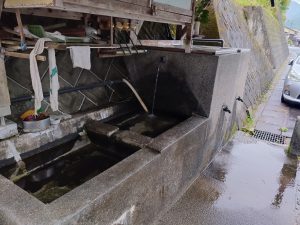

今夜の宿は街の中心から8㎞ほど離れた「フェアフィールド・バイ・マリオット岐阜郡上」。街の中心からは遠いものの、温泉施設や飲食店を備えた道の駅に隣接しており、不便はまるでない。むしろ夜は街の喧騒から程遠く、蛙の声しか聞こえてこないことはきわめて快適だった。


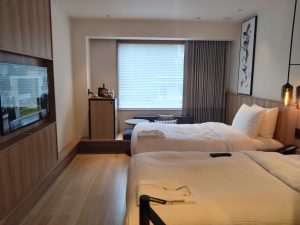

快晴の天気の中で、滝巡りと「モネの池」
ようやく晴れ渡った翌朝はホテルから15㎞ほど北上し、駒が滝へ。国道156号線沿いに見える滝は大きくはないけど、新緑の中を走り落ちる水から虹が現れ出る光景は一見の価値があった。


そこから再び国道を南下し、今度は阿弥陀が滝へ。落差60mの日本百名瀑の一つ、葛飾北斎が「諸国瀧廻り」で描いたことでも有名。
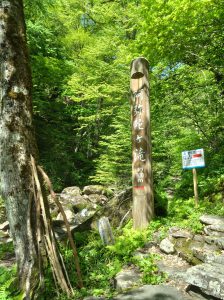
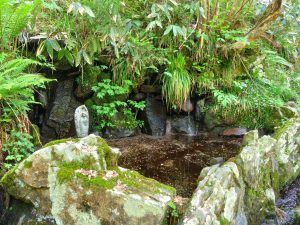


車を停めた場所から遊歩道を通り、途中に湧水、阿弥陀堂を経て10分ほどで滝の真下に着く。滝壺のすぐ近くまで近づくことができ、新緑の洪水の中で注ぎ落ちる滝はむしろ神々しい。今やいっぱしの観光地になっているようだけど、初めてこの滝を見た人がここにお堂を建てようとした気持ちがよくわかる。


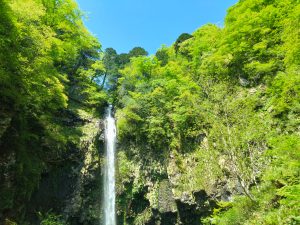

阿弥陀が滝から南西に少し行くと、近年になって突然注目を集めた「モネの池」がある。もともとは田舎の神社の前に湧いた水で池ができただけで、名前すらなかったんだけど、たまたまこの神社の横に植物業者が店を出しており、たまった雑草を引き抜いてスイレンを植え、また集落の中で錦鯉を趣味にしていた方が池に鯉を放ったら、数年で見事にクロード・モネの絵画のような光景が出来上がってしまった。地方の片隅でまったくの無名だった自然資源が、人々のちょっとした工夫でとんでもないバリューを創造するという観光学の見本のような事例だ。
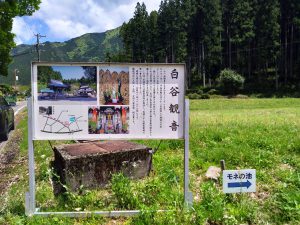



写真にもあるが、向う岸の橋の前に見える白い砂底から清水が湧いており、この池の水源になっている。
“うだつの上がった”街から岐阜城へ
日本語で「うだつが上がらない」と言う言葉は、「いつまでも成功できない人生」を表す。ただ“うだつ”って何だろう?具体的に写真で見せると、下のようなもの。

写真の中で赤く囲った部分、隣家との境に建てた防火壁のことだ。コストのかかるこの「うだつ」を高く派手に上げることが商人の自己実現であり、このうだつを上げられない家を「うだつが上がらない=いつまでも出世できない」と低く見た。この言い伝えの主な舞台となったのが、岐阜県南部に位置し、伝統的な和紙でも知られる美濃市だ。ここは江戸時代に商家が競って「うだつ」を上げていた町で、現在でも残るうだつが連立する町並みの中に、今井家と言う江戸中期に建てられた商家が史料館として残されている。





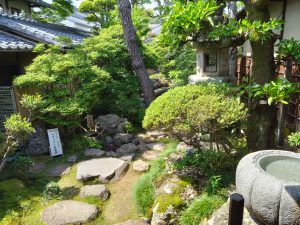

今井家の庭には お稲荷様の社(やしろ)があり、その横の灯篭にハートマークがある。これはもともと「猪の目」という猪の目を模した造形らしいが、現在では隠れたハートマークとして観光客の目を集めている。
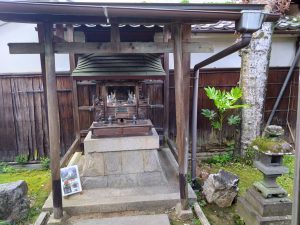

縁先には水琴窟もあり、この音は環境庁が選んだ「日本の音風景100選」にも選ばれており、この音を聞くだけでも訪れる意義がある。
短い日程ながらも岐阜県で最後の訪問先は岐阜市郊外の岐阜城。小学校の時に遠足で訪れたことをよく覚えている。かつては斎藤道三の居城であり、織田信長が攻略してからは天下統一の拠点となった城。現在の城の建物自体は1956年になって鉄筋を入れて再建されたものだが、金華山の山頂に位置する山城として(標高329m)守りの城としては実に堅固なものだったのではない。天守閣からははるかに北は日本アルプスから、南は名古屋市街まで見渡すことができる。




名古屋に1泊、実は旅の主目的はこの街に
岐阜城から降りてきてから、岐阜駅でレンタカーを返却し、在来線で名古屋駅へ。今夜はここに1泊。実は今回の旅の主目的はこの名古屋にある。さっそく翌日に向かうことにして、まずはコンフォートホテル名古屋名駅南にチェックイン。ずいぶん広い部屋だな、と思ったら、車椅子対応の障碍者向けの部屋だった。




名古屋は子供時代に中学校まで住んでいたところで、今でも自分の基本的な味覚は八丁味噌を始めとして名古屋で培われたものと自任している。その子供時代に毎月のように通っていたのが伏見にある市立科学館、その施設の中でも特にプラネタリウムは月替わりのプログラムを毎月楽しみに観ていた。
今回も開館時間に合わせて楽しみに向かったものの、駅から科学館に行くまでの道すがら、やたらにアジア系インバウンドのファミリーが多い。そして実際に科学館のエントランスに到着すると、軽く1,000人以上の大行列になっており、プラネタリウムも午後まで予約でいっぱい!数十年ぶりに訪れた科学館は、いつの間にかインバウンドファミリーの聖地となっていたようだ。なんだか小学会時代の友人に大人になってから会いに行ったら、すごく成功して有名になっていて、「お前、誰だっけ?」と言われたような気分になった。

気を取り直して地下鉄で熱田神宮へ。かつては初詣の参拝人数で日本一だった神社、三種の神器のうち「草薙剣(くさなぎのつるぎ)」が祀られている。それだけに敷地の中には「草薙館」という数々の刀を納めた博物館もある。残念ながら館内は撮影禁止なので、受付の天井に展示された造形作品の写真を載せておきます。


この旅最後の目的地は、今回の旅程を組んだ真の理由となった大須のお店へ。


そう、今回の旅の目的は「大須ごへいもち店」!中部地方の名物「五平餅」は全国的に有名だけど、ほとんどの人の頭にあるのは草鞋型のモチ米に砂糖醤油を塗ったもの。しかし伊那谷や岐阜県の恵那峡の地域では、団子型の五平餅が一般的で、幼い頃に木曽福島で暮らした自分にとって五平餅は断然このタイプ。とは言っても、全国的な知名度としてはきわめてマイナー。そんな時にふとTVでこの店が取り上げられたのを見て、真っ先にGWにはここに行こうと決めてしまった。店内で久々の団子型の五平餅を堪能した後に、50本分の冷凍配送を発注。これで今回の2泊3日の旅が終了。

Golden Week:In Japan, holidays season between 29. April and 5. May is called Golden Week. During the season, 29. April, 3., 4., and 5. fall on National holidays. Therefore if you could take additional 3 holidays between 30. April and 2. May, you have 10 consecutive holidays in the case of this year.
Golden Week: A 3-Day, 2-Night Trip to Gifu and Nagoya
For this year’s Golden Week in 2024, I decided to take a vacation on the weekdays of Wednesday, May 1st, and Thursday, May 2nd, making it a 3-day, 2-night trip from Gifu to Nagoya until Friday, May 3rd. Nagoya is actually my birthplace, and even though I moved frequently during my childhood, it is a place where I spent a considerable amount of time. Taking advantage of this opportunity to revisit after several years, I planned to also visit some famous spots in Gifu Prefecture that I usually wouldn’t go to.
First, I took the Shinkansen to Nagoya, and from there, it’s about a 20-minute ride on the Tokaido Main Line to Gifu Station. I rent a car in Gifu and explore the prefecture until the next day. Then, I will spend one night in Nagoya before returning to Tokyo. To avoid the Golden Week crowds as much as possible, I scheduled the main part of the trip during the weekdays.
On the First Day, Intense Rain and Wind Forced Us to Take Shelter in a “Hole”
We arrived at Gifu Station in the morning, rented a car, and headed first to Yoro Falls, one of Japan’s top 100 waterfalls. It is located in the western part of Gifu Prefecture, near Sekigahara, an ancient battlefield, and I had visited it on a school trip when I was in elementary school. Unfortunately, it has been raining nonstop since morning, so we quickly gave up on walking the promenade to the falls. Instead, we decided to visit the nearby “Site of Reversible Destiny Yoro Park,” a contemporary art installation set up in the 1990s. I thought it would mainly be an indoor venue where we could escape the rain, but that was a huge mistake!
The entire facility is a sprawling outdoor exhibit spread over a vast 18,000 square meters of hilly terrain. With the added factor of violent winds blowing down from the mountains, it became impossible to walk outside. We paid the 1,500 yen admission fee for two people, only to retreat in a hurry five minutes later! Originally, the many outdoor art installations spread across the hilly area were supposed to eliminate horizontal and vertical axes intentionally, throwing off the observer’s sense of balance. However, our lack of proper advance research led to this misjudgment.




Unable to explore Yoro Falls, we next headed to Gujo Hachiman City, where we would stay for the night. Since a nearby limestone cave wouldn’t be affected by the rain, we decided to visit Otaki Limestone Cave. Gujo Hachiman has several limestone caves, but Otaki is one of the largest and is famous for its waterfall inside the cave. As someone who loves caves and has toured many limestone caves and caverns around the world, I had never seen a waterfall of this scale.
After purchasing the admission ticket, we took a cable car to the entrance.
The cave is of medium size for a limestone cave, with some areas seemingly artificially connected. However, the 30-meter waterfall inside the cave was something I had never seen before.




By the evening, we had finished exploring the limestone cave and drove about 10 minutes to Gujo Hachiman City. Gujo Hachiman is a town surrounded by mountains and situated along the Nagara River. Taking advantage of the abundant water, the town has many “mizuya (outdoor water wash place)” at various street corners, where spring water is channeled for everyday use.
In fact, one reason I chose this place for our stay was to enjoy the scenery of these mizuyas, but unfortunately, the heavy rain prevented us from fully appreciating them.




Tonight’s accommodation is the “Fairfield by Marriott Gifu Gujo,” located about 8 kilometers from the city center. Despite being far from the town center, it is adjacent to a roadside service station with hot spring facilities and restaurants, so it is not inconvenient at all. In fact, being away from the hustle and bustle of the town at night, with only the sounds of frogs, was extremely comfortable.




Sunny Weather: Waterfalls and “Monet’s Pond”
Finally greeted by clear skies the next morning, we headed about 15 kilometers north from the hotel to Komagataki Falls. Although the waterfall visible from Route 156 is not large, the sight of the water cascading down through the fresh greenery, creating a rainbow, was well worth seeing.


From there, we headed south again on the national highway, this time to Amidagataki Falls. With a drop of 60 meters, it is one of Japan’s top 100 waterfalls and is also famous for being depicted by Katsushika Hokusai in his series “A Tour of Waterfalls in Various Provinces.”


From the parking area, we walked along a promenade, passing a water spring and Amida Temple Hall, reaching the base of the waterfall in about 10 minutes. You can get very close to the plunge pool, and the sight of the waterfall pouring down amidst the lush greenery was almost divine. Although it has now become quite a tourist spot, it’s easy to understand why the first person who saw this waterfall felt compelled to build a temple hall here.


A little southwest from Amidagataki Falls lies “Monet’s Pond,” which has recently garnered sudden attention. Originally, it was just a pond formed by spring water in front of a rural shrine and didn’t even have a name. By chance, a plant shop opened next to the shrine, and the owner pulled out the accumulated weeds and planted water lilies. Additionally, a local hobbyist who raised Nishiki-koi (colorful carp) released some into the pond. Within a few years, this unremarkable natural resource in a rural corner transformed into a scene remarkably reminiscent of a Claude Monet painting. This is a perfect example in tourism studies of how a little ingenuity from people can create immense value from an unknown natural resource.








As seen in the photo, clear water springs from the white sandy bottom in front of the bridge on the far shore, which serves as the water source for this pond.
From the Town Where “Udatsu” Rises to Gifu Castle
“Udatsu” refers to a small wall or firewall placed at the edge of a roof, often seen in traditional Japanese townhouses. It was originally designed to prevent fires from spreading between houses. Over time, it became a symbol of status and wealth, as only those who could afford it would build such structures. Therefore, the phrase “udatsu ga agaranai” came to signify someone who has not yet succeeded or improved their status in life.

In the photo, the area circled in red shows the firebreak wall built between neighboring houses. Constructing these “udatsu” was costly, and raising them high and elaborately was a form of self-fulfillment for merchants. Houses that could not afford to build such udatsu were looked down upon, symbolizing a lack of success or advancement, hence the phrase “udatsu ga agaranai” (unable to rise in life).
The main stage for this tradition was Mino City, located in the southern part of Gifu Prefecture, also known for its traditional Japanese paper. During the Edo period, merchant houses in this town competed to build udatsu. Even today, the town retains rows of buildings with udatsu. Among them, the Imai House, a merchant house built in the mid-Edo period, has been preserved as a historical museum.







In the garden of the Imai House, there is a shrine dedicated to Inari. Next to it, on a lantern, there is a heart-shaped mark. Originally, this shape was designed to resemble a boar’s eye, known as “ino-me.” However, it has now gained attention from tourists as a hidden heart mark.


In the garden of the Imai House, there is also a Suikinkutsu (water harp cave), and the sound it produces has been selected by the Ministry of the Environment as one of the “100 Soundscapes of Japan.” Hearing this sound alone makes the visit worthwhile.
Despite the short schedule, the final destination in Gifu Prefecture was Gifu Castle on the outskirts of Gifu City. I vividly remember visiting it on a school trip in elementary school. The castle was once the residence of Saito Dosan and, after being conquered by Oda Nobunaga, became the base for his quest to unify Japan. The current structure was rebuilt with reinforced concrete in 1956, but as a mountain castle located on the summit of Mount Kinka (329 meters above sea level), it must have been incredibly well-fortified. From the castle keep, you can see as far north as the Japanese Alps and as far south as the city of Nagoya.




One Night in Nagoya: The Main Purpose of the Trip
After descending from Gifu Castle, we returned the rental car at Gifu Station and took a local train to Nagoya Station. We would spend the night here. In fact, the main purpose of this trip was to visit Nagoya. We decided to head out the next day and first checked into the Comfort Hotel Nagoya Meieki Minami. I thought the room was quite spacious, and then realized it was a wheelchair-accessible room designed for people with disabilities.




Nagoya is where I lived until middle school, and I still pride myself on having taste preferences shaped by Nagoya, especially the flavors of Hatcho miso. During my childhood, I frequently visited the Municipal Science Museum in Fushimi, and I especially looked forward to the monthly changing programs at the planetarium.
This time, I eagerly headed to the museum, aiming to arrive as it opened. On the way from the station to the museum, I noticed an unusually large number of Asian inbound families. When I finally reached the museum entrance, I was met with a massive line of over 1,000 people, and the planetarium was fully booked with reservations until the afternoon! It seems that in the decades since I last visited, the science museum has become a popular destination for inbound families. It felt like visiting an old friend from elementary school only to find they had become very successful and famous, leaving me feeling like an unrecognized face from the past.

After regaining my composure, I took the subway to Atsuta Shrine. This shrine, once the most visited for New Year’s prayers in Japan, enshrines the Kusanagi no Tsurugi, one of the Three Sacred Treasures of Japan. Within the grounds, there is also the “Kusanagi-kan,” a museum housing numerous swords. Unfortunately, photography is prohibited inside the museum, so here is a photo of the artwork displayed on the ceiling at the reception.


The final destination of this trip was a shop in Osu, which was the true reason for planning this itinerary.


Yes, the purpose of this trip was to visit “Osu Goheimochi Shop”! Goheimochi, a specialty of the Chubu region, is famous nationwide, but most people think of the sandal-shaped glutinous rice cakes coated with a soy sauce and sugar glaze. However, in the Ina Valley and Ena Gorge area of Gifu Prefecture, the dango-shaped goheimochi is common. For me, having spent my childhood in Kiso-Fukushima, this type of goheimochi is the definitive version. Despite its regional popularity, it’s relatively unknown on a national level.
When I saw this shop featured on TV, I immediately decided that I would visit it during Golden Week. After thoroughly enjoying the dango-shaped goheimochi in the shop, I placed an order for 50 frozen goheimochi to be delivered. With that, my two-night, three-day trip came to an end.
